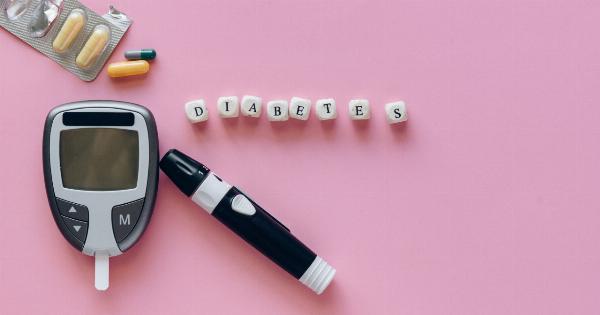Access to affordable healthcare and essential medications is a fundamental right for every individual. However, many people worldwide struggle to afford the high costs associated with medical treatments and prescription drugs.
In recent years, efforts have been made to improve coverage and accessibility for participation in medicines, ensuring that individuals can attain the essential medications they need for their well-being. This article explores the importance of coverage for participation in medicines and highlights the available options that make healthcare more accessible for all.
The Challenges of Medication Costs
Healthcare costs, including the expenses associated with prescription medications, have been rising at an alarming rate in most countries around the world.
This increase in costs often creates barriers to access for individuals who are unable to afford the drugs essential for their health and recovery. People with chronic illnesses, such as diabetes, heart disease, or cancer, are particularly vulnerable to the high costs of medications, often required to manage their conditions effectively.
Unfortunately, without appropriate coverage, many people are forced to make difficult choices when it comes to their health. Some may be compelled to skip doses or ration their medication, which can have severe consequences on their well-being.
Others might sacrifice other necessities, such as food or shelter, in order to afford essential medicines. These situations highlight the urgent need for improved coverage options to alleviate the financial burden associated with obtaining prescribed drugs.
Government Initiatives
Recognizing the pressing issue of medication affordability, governments around the world have started implementing various initiatives to improve coverage for participation in medicines.
These initiatives aim to provide financial relief to individuals and families burdened with high healthcare costs. Here are some examples of government-led actions:.
1. Universal Healthcare Coverage: Some countries have established comprehensive healthcare systems that ensure coverage for participation in medicines as part of their universal healthcare plans.
These plans eliminate or significantly reduce the out-of-pocket expenses for individuals seeking medical treatment, including prescription drugs.
2. Subsidized Medications: Governments may negotiate drug prices with pharmaceutical companies, allowing them to offer medications at reduced prices to individuals who cannot afford to pay the full cost.
This approach helps make essential medications more accessible and affordable to those in need.
3. Public Pharmacare Programs: Publicly funded pharmacare programs provide coverage for a variety of prescription drugs, making them more accessible to low-income individuals and families.
These programs often set income thresholds to determine eligibility for coverage, ensuring that those who need assistance the most receive it.
Employer-Provided Coverage
Aside from government initiatives, employer-provided healthcare coverage is another avenue that offers individuals access to affordable medications. Many employers include prescription drug coverage as part of their employee benefits package.
This coverage helps reduce the financial burden faced by employees when it comes to purchasing essential medications.
Employer-provided coverage typically involves a portion of the medication costs being shared between the employer and the individual.
This arrangement ensures that individuals can access medications at a more affordable price, provided they are employed by an organization that offers such benefits.
Health Insurance Plans
For individuals who do not have access to employer-provided coverage or government initiatives, health insurance plans offer an alternative option to obtain coverage for participation in medicines.
Health insurance companies provide various plans that include prescription drug coverage at different levels.
Individuals can select a health insurance plan that best suits their needs and budget, allowing them to receive the necessary medications with a reduced financial burden.
Health insurance providers negotiate rates with pharmacies and pharmaceutical companies, ensuring that their policyholders can access medications at discounted prices.
Medication Assistance Programs
Medication assistance programs exist to provide support to individuals who are unable to afford their prescribed medications. These programs are often sponsored by pharmaceutical companies, charitable organizations, or advocacy groups.
They aim to bridge the gap between high medication costs and limited financial resources faced by patients.
Through medication assistance programs, eligible individuals may receive free or discounted medications directly from the manufacturer.
The programs typically require applicants to meet specific criteria related to income, medical condition, or lack of sufficient insurance coverage.
Online Pharmacies and Generics
As technology continues to advance, online pharmacies have become more prevalent. These platforms offer a convenient and cost-effective alternative for individuals seeking medications at a reduced price.
Online pharmacies often provide generic versions of brand-name drugs, which can be significantly cheaper while maintaining the same therapeutic effects.
By purchasing medications through online pharmacies or opting for generic alternatives, individuals can save money on their prescriptions and reduce the financial burden associated with accessing essential medicines.
Conclusion
Access to affordable medications is vital for individuals to maintain their health and quality of life.
Coverage for participation in medicines has become a critical aspect of healthcare systems worldwide, with governments, employers, and insurance providers recognizing the need to alleviate the burden of medication costs. Through initiatives such as universal healthcare coverage, subsidized medications, and public pharmacare programs, individuals can receive financial support when it comes to purchasing essential drugs.
Employer-provided coverage, health insurance plans, medication assistance programs, and online pharmacies are additional avenues people can explore to make medications more accessible and affordable.
These options ensure that nobody has to compromise their well-being due to the financial strain associated with essential medications.
By improving coverage for participation in medicines, societies can create a healthier and more equitable future where everyone has access to the medications they need for their well-being.


























